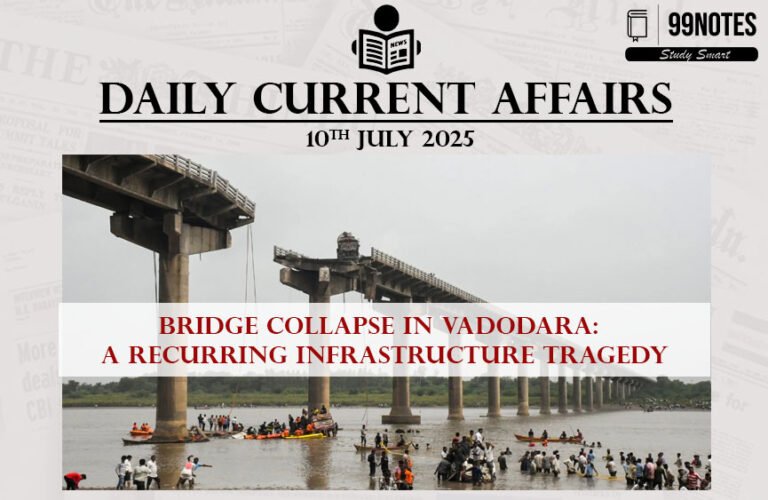25 January 2025 : Indian Express Editorial Analysis
1. Beyond the China Factor
(Source – Indian Express, Section – The Editorial Page – Page No. – 12)
| Context |
|
Analysis of the news:
Broadening Strategic Partnership
- This visit reflects Prabowo’s ambition to elevate Indonesia’s role on the global stage, extending its influence beyond ASEAN.
- His emphasis on strategic autonomy aligns closely with India’s foreign policy aspirations under Prime Minister Narendra Modi, setting the foundation for a partnership that navigates the complexities of the international order collaboratively.
Historical Foundation and Recent Momentum
- The groundwork for this partnership was laid during the second terms of Indian Prime Minister Narendra Modi and Indonesian President Joko Widodo.
- Foreign ministers Retno Marsudi and S. Jaishankar cultivated a strong working relationship, fostering regular foreign ministerial consultations.
- This cooperation gained momentum during the nations’ back-to-back G20 presidencies in 2022 and 2023.
- Such diplomatic engagement has established a robust framework, albeit underutilized, for deeper bilateral cooperation.
Navigating Global Challenges and Building Leadership Dynamics
- Despite occasional differences in voting patterns at forums like the United Nations, the shared desire for enhanced global stature binds India and Indonesia.
- Prabowo’s alignment with Modi’s vision offers potential for a more dynamic leadership rapport than the previous Modi-Jokowi equation.
- However, forging strong ties between Indian External Affairs Minister Jaishankar and Indonesia’s new foreign minister, Sugiono, will be critical to translating this vision into tangible outcomes.
Leveraging BRICS for Strategic Influence
- Indonesia’s induction into BRICS in 2023 offers another avenue for collaboration.
- Both nations could leverage their partnership to bring strategic weight to the bloc, similar to India’s collaboration with Brazil.
- While Indonesia’s economic ties with China might limit divergence from Beijing’s preferences, Prabowo’s independent policymaking opens opportunities for cooperation that transcend the “China factor.”
- Effective diplomacy can help align their positions without undermining Indonesia’s economic interests in China.
The Indo-Pacific and Maritime Cooperation
- The Indo-Pacific region emerges as a crucial domain for collaboration. Indonesia’s evolution from initial skepticism to active engagement in crafting ASEAN’s Outlook on the Indo-Pacific (AOIP) complements India’s Indo-Pacific Oceans Initiative (IPOI).
- By jointly promoting the maritime resources pillar under the IPOI, India and Indonesia can champion a regional agenda that extends beyond ASEAN, aligning with Prabowo’s “ASEAN Plus” vision.
- This cooperation strengthens their shared commitment to a stable and inclusive Indo-Pacific.
Expanding Trilateral Partnerships
- Another key area of focus is the development of trilateral frameworks involving Indonesia, India, and partners like Australia and Japan.
- While the existing India-Indonesia-Australia trilateral lacks substantive initiatives, Prabowo’s visit to New Delhi, following his engagement with Australia, presents an opportunity to inject fresh momentum.
- Building on the IPOI and leveraging India’s upcoming chairmanship of the Indian Ocean Rim Association (IORA), such partnerships can reinforce regional security and connectivity.
Enhancing ASEAN Collaboration and Regional Integration
- India and Indonesia must deepen engagement on ASEAN-related platforms, such as ASEAN-plus-one, the East Asia Summit (EAS), and the ASEAN Regional Forum (ARF).
- Prior consultations can enable both nations to exert greater influence on regional architecture. Myanmar, a contentious issue, demonstrates the importance of sustained dialogue despite differing perspectives.
- Additionally, integrating Indonesia into the Bay of Bengal Initiative for Multi-Sectoral Technical and Economic Cooperation (BIMSTEC) could strengthen its ties with India’s eastern neighborhood.
Strengthening Ties with Japan and Beyond
- Japan’s recent engagement with Indonesia, including expanded Official Security Assistance (OSA) for defense, highlights potential for a trilateral partnership with India.
- This synergy could enhance defense and economic cooperation, particularly in areas like maritime security and supply chain resilience.
- Such collaboration underscores the broader regional vision shared by India, Indonesia, and Japan.
Conclusion:
- India and Indonesia’s partnership, anchored in platforms like BRICS, the IPOI, and trilateral frameworks, holds immense potential to reshape the strategic landscape of the Indo-Pacific and beyond.
- While challenges, such as differing perspectives on China, persist, focusing on shared priorities can deepen their cooperation.
- By aligning their strategic aspirations, India and Indonesia can emerge as pivotal players in promoting stability, connectivity, and prosperity in the region.
| Challenges in India-Indonesia Relationship |
|
| Practice Question: Discuss the significance of strengthening India-Indonesia bilateral relations in the context of emerging geopolitical challenges in the Indo-Pacific region and global multilateral frameworks like BRICS and ASEAN. (150 Words /10 marks) |
2. A lot done, more to do
(Source – Indian Express, Section – The Editorial Page- Page No. – 12)
| Topic: GS2 – Social Justice |
| Context |
|
Analysis of the news:
The Transformation of India Post-Independence
- Emerging from colonial rule, India embarked on a historic journey to empower its citizens through a carefully crafted Constitution that introduced universal adult franchise and democratic freedoms.
- The country transitioned from sectarian violence to building a robust democratic identity.
- India’s swaraj extended beyond political independence, encompassing the promise of social and economic emancipation, equality, and fraternity.
- Against the skepticism of critics, the Constitution’s guarantees of justice, equality, and universal participation symbolized a bold aspiration to chart a new path toward inclusive development.
Achievements in 75 Years of the Republic
- The 75th anniversary of the Constitution is a moment to celebrate India’s remarkable progress.
- Life expectancy has risen from 32 to 75 years, literacy rates from 12% to 75%, and India has become a leading foodgrain producer.
- Infrastructure development, power generation, and technological advancements like the Chandrayaan-3 mission signify India’s achievements.
- With the fifth-largest global economy and a stable democratic system, India has surpassed the performance of many of its neighbors and even older democracies, showcasing its resilience and potential.
Persistent Inequalities and Social Disparities
- Despite these successes, the stark inequalities in wealth distribution and gender disparities remain areas of concern.
- A small minority controls a significant share of national income, leaving many citizens behind.
- The Constitution guarantees dignity, fraternity, and justice, yet economic and social justice remain unfulfilled for the weakest and most vulnerable.
- True progress demands addressing these disparities to ensure equitable access to resources, opportunities, and a dignified standard of living for all.
The Challenge of Eradicating Caste Discrimination
- Caste-based discrimination, particularly manual scavenging, undermines the promise of dignity and equality enshrined in the Constitution.
- True fraternity requires society to recognize the equal worth and potential of all citizens, eradicating caste-based stigmatisation.
- The state must intensify efforts to eliminate these inhumane practices and foster a mindset that values every individual equally.
Reforming the Legal System for Accessible Justice
- India’s legal system faces immense challenges, including an overburdened judiciary and inadequate infrastructure.
- With only 25,081 sanctioned judges for 1.4 billion people and a significant number of vacancies, the judiciary struggles with crushing caseloads.
- Judges often lack the time for reflective decision-making due to their overwhelming workload.
- Systemic reforms, including increasing judicial strength, improving infrastructure, and streamlining procedures, are crucial for delivering quick and affordable justice.
- Public dialogue and cooperation between governance wings are essential to address these challenges effectively.
Bridging the Digital Divide
- India’s digital revolution has transformed access to banking, retail, and education, but it also exacerbates the digital divide.
- Millions remain excluded due to geographical limitations, low digital literacy, and limited financial capacity.
- This divide undermines access to essential services, rights, and entitlements, disproportionately affecting vulnerable populations.
- Bridging this gap is critical to ensuring equitable progress in the digital age.
Addressing Climate Change and Its Impacts
- Climate change poses a significant threat to India’s geographically diverse landscape.
- Rising temperatures, erratic rainfall, droughts, and floods adversely affect public health, agriculture, and safety, with the marginalised bearing the brunt of these challenges.
- Mitigating climate change’s impact requires urgent policy measures to ensure sustainable development and protect vulnerable communities.
The Path Forward:
- India’s progress must be measured not by gross national wealth but by the well-being and dignity of each individual.
- Breaking down barriers of inequality and ensuring social, economic, and political justice are the nation’s greatest challenges.
- As India reflects on its 75-year journey, the focus must be on achieving an equitable society where every citizen enjoys dignity, justice, and equal opportunity, fulfilling the aspirations of its Constitution.
| Practice Question: Critically analyze India’s progress in fulfilling the constitutional promises of equality, dignity, and justice over the past 75 years. Highlight the challenges that persist and suggest measures to address them.(150 Words /10 marks) |
For more such UPSC related Current Affairs, Check Out –24 January 2025 : Indian Express Editorial Analysis


